There are 22 disused railway stations in the 75 miles (121 km) between Bristol Temple Meads and Exeter St Davids, 12 of which have structures that can still be seen from passing trains. Most were closed in the 1960s but four of them, especially around Weston-super-Mare, were replaced by stations on new sites. 13 stations remain open on the line today, but there have been proposals to reopen stations at Cullompton and Wellington.

There are eleven disused railway stations between Exeter St Davids and Plymouth Millbay, Devon, England. At eight of these there are visible remains. Of the eleven stations, South Brent and Plympton are subject of campaigns for reopening while Ivybridge station was replaced by another station on a different site.
There are seventeen disused railway stations on the Cornish Main Line between Plymouth in Devon and Penzance in Cornwall, England. The remains of nine of these can be seen from passing trains. While a number of these were closed following the so-called "Beeching Axe" in the 1960s, many of them had been closed much earlier, the traffic for which they had been built failing to materialise.
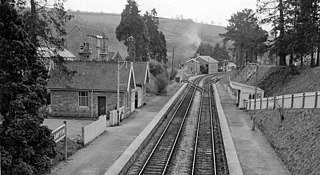
The Exe Valley Railway was a branch line built by the Great Western Railway (GWR) in Devon, England, to link its Bristol to Exeter line with its Devon and Somerset Railway (D&SR), thereby connecting Exeter with Dulverton. The line was in use from 1884 until 1964.
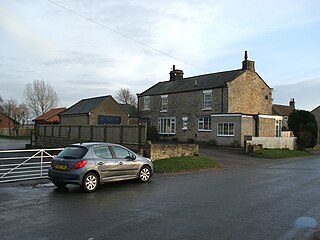
Slingsby railway station is a disused railway station that served the village of Slingsby in North Yorkshire, England. It was built on the orders of the Earl of Carlisle, the local landowner, opened in 1853 and closed to regular passenger trains on 1 January 1931, but remained open for freight traffic and occasional special passenger trains until 10 August 1964. The station was the only one on the Thirsk and Malton line to be built of stone. It had a single platform that was originally very low, but parts of it were raised to the standard height for NER platforms of 2' 6" after 1865. The goods yard consisted of four sidings, three on the up side and one on the down side of the line. A passing loop on the latter siding that had been taken out of use early in the station's history was reinstated and lengthened in 1943 for unloading ammunition. There were a brick and a timber warehouse, a second brick warehouse was built in 1858 at the request of a corn merchant.
The Bangor and Carnarvon Railway was a railway company promoted to build a branch railway connecting Caernarfon with the main line at Bangor, in north-west Wales. It opened in 1852 as far as Port Dinorwic and was extended to Caernarfon later in the same year.

Husthwaite Gate railway station is a disused railway station in North Yorkshire, England. It served the nearby village of Husthwaite.
Riddings Junction railway station was a railway station in Cumbria, England, from 1862 to 1967 on the Border Union Railway.
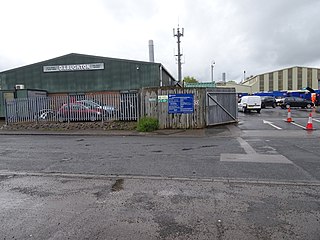
Tadcaster railway station was a railway station on the Harrogate to Church Fenton Line in Tadcaster, North Yorkshire, England.

Goswick railway station served the hamlet of Goswick, Northumberland, England from 1870 to 1964 on the East Coast Main Line.

Lucker railway station served the village of Lucker, Northumberland, England, from 1847 to 1965 on the East Coast Main Line.

Christon Bank railway station served the village of Christon Bank, Northumberland, England from 1847 to 1965 on the East Coast Main Line.

Longhirst railway station served the village of Longhirst, Morpeth, England from 1847 to 1964 on the East Coast Main Line.

Choppington railway station served the village of Choppington, Northumberland, England from 1858 to 1964 on the Blyth and Tyne Railway.
Fencehouses railway station served the village of Fencehouses, Tyne and Wear, England from 1841 to 1964 on the Leamside line.

Hunwick railway station served the village of Hunwick, County Durham, England from 1857 to 1964 on the Durham to Bishop Auckland Line.

Hessay railway station served the village of Hessay, North Yorkshire, England from 1849 to 1964 on the Harrogate line.
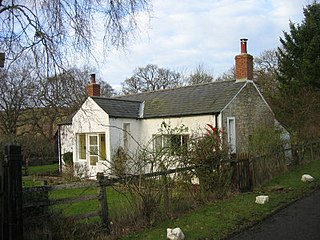
Thorneyburn railway station served the village of Thorneyburn, Northumberland, England from 1861 to 1956 on the Border Counties Railway.
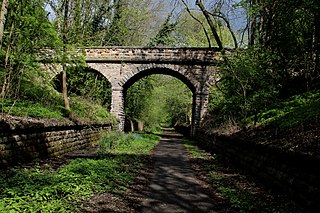
Thorp Arch railway station was a station in the parish of Wetherby, West Yorkshire, on the Harrogate–Church Fenton line. It opened on 10 August 1847 and served nearby Thorp Arch as well as Boston Spa. The station closed to passengers on 6 January 1964 and completely on 10 August 1964.
Quy railway station served the parish of Stow cum Quy, Cambridgeshire, England from 1884 to 1964 on the Cambridge to Mildenhall railway.














